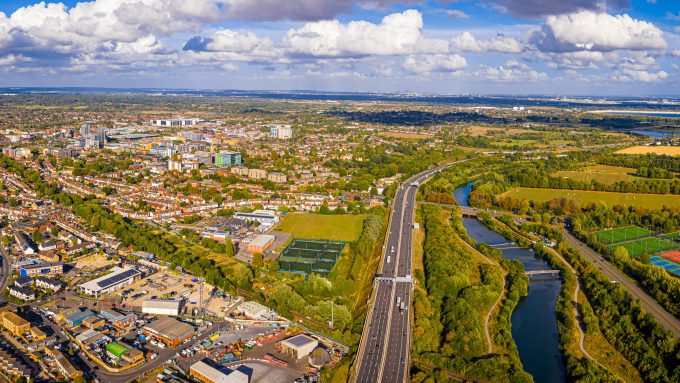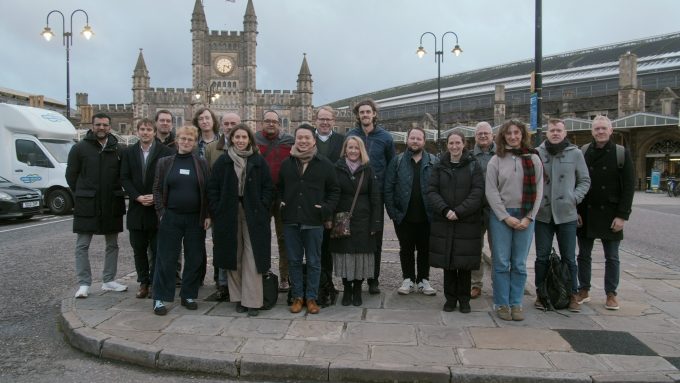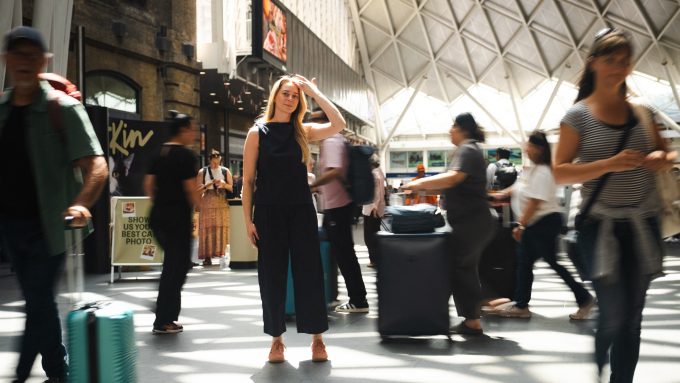
Managing energy use smartly at Bristol Temple Meads

Digital twin technology and the use of AI and machine learning from big data are being put to great use at one of Britain’s busiest rail stations outside London, where small sensors monitoring energy consumption have been installed.
The digital twin technology supplied by start-up company Optimise AI and installed at Bristol Temple Meads as part of the Station Innovation Zone testbed have helped to inform rail managers of efficiency savings that could be found both inside and around the historic building.
Trial of an energy and carbon management digital twin – incorporating a 3D visualisation of the station – have shown that electricity consumption at Temple Meads has the potential to be reduced by as much as a third. This could be achieved by introducing static measures (such as new windows, doors, better insulation, heat pumps or LED lighting) or with dynamic approaches (changing heating levels or intensity of illumination).
Introduction of the technology to site as part of the Station Innovation Zone trial was overseen by Connected Places Catapult working alongside Network Rail.
“We created a digital twin to generate a virtual representation of Bristol Temple Meads in order to work out exactly what is keeping the station functioning, and keeping its occupants happy and healthy. With all of that information, we can generate a scenario for improvement.”Optimise AI director Nick Tune
This spring, the company installed small Internet of Things sensors around the station to measure how many people were using rooms and public spaces in order to determine the most appropriate temperature and lighting levels, and to monitor humidity and carbon dioxide around the station.
It also used sensors at barrier gates and considered train timetable detail, to help the system learn which platforms were about to receive an influx of passengers when, in order to alter energy output accordingly and save money.

Focusing on cutting energy waste
Nick is an engineering technologist who previously worked for the Building Research Establishment (BRE) in Wales and consultant Atkins. He established Optimise AI at the start of this year as a spin out from Cardiff University’s school of engineering.
Nick says that many buildings including railway stations lack sufficient data to indicate how much energy is being consumed; leading to limited opportunity to generate any meaningful insights that can be acted upon. But by introducing extra electricity meters and sensors, more data can be gleaned.
In stations, the largest consumers of energy tend to be lighting and the operation of machinery such as lifts and escalators, he adds. “Stations can be massively wasteful environments and there is often a lack of knowledge as to how many of them are performing.
“My whole focus is around using digital systems to deliver a more sustainable built environment by minimising electricity usage and carbon emissions. We have shown the system can deliver savings, having previously used the technology in care homes and leisure centres.
“What we have created here is a digital twin that provides real value using live data to predict how a station is going to perform, and how conditions can be improved.”
Benefitting from Catapult assistance
Nick was introduced to Connected Places Catapult through its Future of Air Mobility programme, which led to a grant of £45,000 to Cardiff University and a trial of its energy monitoring system at Luton Airport.
Following the airport trial and the creation of Optimise AI, the company introduced its energy monitoring system at Reading station, and was subsequently selected to join the Station Innovation Zone competition at Bristol Temple Meads receiving £70,000 to conduct further trials of the technology.
“The money allowed us to test and develop our technology, after we rebuilt the whole interface,” Nick says. “Connected Places Catapult is very helpful for small companies like ourselves, and provided us with new connections with Network Rail. We wouldn't be where we are now if it wasn't for the Catapult. I can't speak highly enough for what it has done to support us.”
Moving forward, Nick hopes to roll out the digital twin to other large stations, as well as rail depots and line-side buildings housing operational equipment beside railway tracks. “There's a massive opportunity to look energy and carbon for the railways on a whole estate level.”
Nick also says it is not only fixed railway infrastructure that could benefit from a deep dive into energy performance: improving the efficiency of electric trains presents a further area to explore.
Read more about the Station Innovation Zone and apply to take part in year three of the competition.





